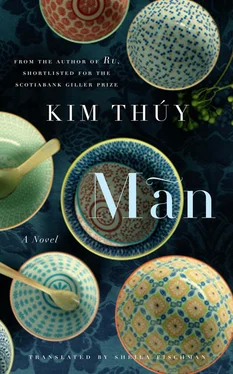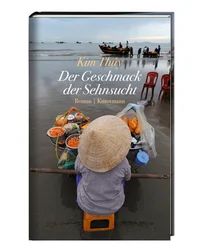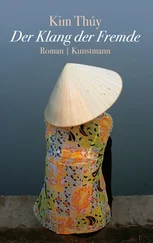And so Maman injected new life into our restaurant by adding recipes to our menu now and then, which continued to follow only our regular customers’ wishes and the happenstance of our memories.
hồng

pink and sometimes red
HỒNG AND HER DAUGHTER became members of the family when they moved into the apartment that had been used as the children’s daycare. She had left her husband when Julie caught a glimpse of the bruises scattered over her body. Hidden by long sleeves and dark trousers, it was possible to forget them. The bravo s and the thank you s of the customers also erased the unwitting abuse and the oblivious insults that alcohol poured onto her. She pushed forward head-long, ignoring her nights, disregarding blows, using her body as a shield to protect her daughter from the threat of being sent back to Vietnam, where she thought she would no longer fit in. It was easy to close her eyes because the only two mirrors in the dark apartment reflected more the explosion of anger than her silhouette, which appeared there in fragments. She had forgotten what she looked like in one piece until the day she saw herself in Julie’s eyes when she accidentally opened the bathroom door as Hồng was taking off her chef’s jacket.
We went in a four-car convoy, two women and six men, to rescue Hồng and her daughter from a reality that had become a way of life, a habit. Her husband never put to the test the army that stood upright behind her that night and every night thereafter. Before we had time to sort through photos and arrange them in albums, Hồng’s daughter had started her first year in medicine at university and we were launching the first cookbook from our atelier-boutique-restaurant.
sách

book
THE LAUNCH WAS GIVEN a lot of media coverage thanks to our faithful and enthusiastic admirers, and above all thanks to Julie’s network, which included radio and TV as well as print. A successful broadcast would generate a flattering review. Before the first newspaper article had been framed, magazines filled our precious rigid suitcase made of leather and wood that seemed to have crossed the Indian Ocean, trod the Silk Road or survived the Holocaust. It was set on a folding stand in the window, wide open, rich with all the praise that might come from as far away as the United States and France. In the Weekend à Montréal guide, our atelier-restaurant Mãn was among the essential addresses, while for Frommer’s it was an experience not to be missed. Quebeckers’ interest in Vietnamese cuisine was growing along with the increased opening of Vietnam’s doors to mass tourism. That wave of enthusiasm turned our business into a home base, our book La Palanche (The Yoke) into a cultural reference and me into a spokesperson. Readers praised the recipes but often wanted to talk to me about the tales and anecdotes that had inspired our choices.
The story of the little nine-year-old girl imprisoned for several months after trying to escape by boat explained the taste of tomato and parsley soup better than the picture next to the recipe. We had chosen it in honour of Hồng. She was that little girl, separated from her father and her older brother during their arrest. Minutes before her father pushed her into the crowd crammed onto the boat, he had told her that in no circumstances was she to identify him. She had to tell the police she was travelling alone with her twelve-year-old brother. She’d ended up in the women’s prison, isolated from the men’s by sheets of metal. Her brother had dug a small space under it so he could hold her hand during the night. In daytime she would go all the way to the end of the camp, where only a wire fence separated them. That way, her brother could keep an eye on her. Their father kept as far from his children as possible, changing his name and lying about his address. He never turned around, even when he heard them, sitting on their heels on soil dried by the pacing prisoners, crying from fear and hunger. He hoped that their innocence and their loneliness would allow them to be freed before him. His wish was granted. The children went back to the house, whereas he remained, even after the prison had been shut down for years.
Hồng’s final memory of her father is a faded yellow plastic bowl filled with clear broth and a piece of tomato and a few bits of parsley stem. He had placed it in a corner of the yard, going past her brother, who had held on to the bowl in the circle of his folded legs and waited for Hồng to arrive at the fence to make her drink a little of the tomato water. She had never tasted anything so delicious. Since her liberation, she had been trying to re-create those tastes by making the soup at least once a week. No matter what variety of tomato she tried, she never managed to reproduce the indelible but elusive memory of those few sips. And so we immortalized the recipe in memory of her father.
đòn gánh

the yoke
LA PALANCHE was a resounding success across the province, so much so that a producer suggested a television cooking show. I wanted to broaden the experiment we’d worked on with Philippe, so Julie invited chefs to revisit or to reinvent our Vietnamese recipes on screen, with me. These collaborations confirmed for us that mainly we were creating the same balance of tastes in the mouth but by using ingredients specific to each chef’s region. The osso bucco was brightened up by gremolata, while the lemongrass beef stew was served with pickled daikon for its slightly bitter taste. In traditional Québécois cuisine, beef meatballs are cooked in a brown sauce whose consistency and colour resembles the one based on soya and fermented black beans that garnishes grilled Vietnamese meatballs. In Louisiana, fish is coated in Cajun spices to blacken it, while the Vietnamese use lemongrass and minced garlic.
Of course, certain tastes have an exclusive identity and well-defined borders. For instance, none of the chefs I met knew what to do with the cartilage in chicken bones, while people in Bangkok go into ecstasies over those breaded lumps. It would be cruel of me to impose fermented shrimp paste, intensely mauve and aromatic, on my guest chefs, as it would be to feed them green guavas drenched in salt with very hot peppers. Salmon, however, grilled or fried, goes well with a salad of green mango and ginger. Like friends of long standing, fish sauce goes perfectly with maple syrup in a marinade for spareribs, while in a soup made with tamarind, tomatoes, pineapple and fish, celery is a worthy substitute for the stems of elephant ears. The two vegetables absorb the flavours and carry the broth into their porous flesh as submissively as a servant, at the same time as present as an aspirate h . Oddly enough, the leaf of the elephant ear, unlike its porous stem, could provide shelter from rain because it is impermeable, like the leaves of water lilies and lotus blossoms. Julie, charmed by the two facets of those plants, had a pond dug in the restaurant’s backyard for floating tropical flowers. As soon as the first bud appeared, Maman would recite a popular traditional song that every Vietnamese knows by heart:
Trong đầm gì đẹp bằng sen ,
Lá xanh, bông trắng lại chen nhụy vàng ,
Nhụy vàng, bông trắng, lá xanh ,
Gần bùn mà chẳng hôi tanh mùi bùn .
What is lovelier than the lotus in the swamp,
Its green leaves compete with white petals, with yellow pistils,
Читать дальше













